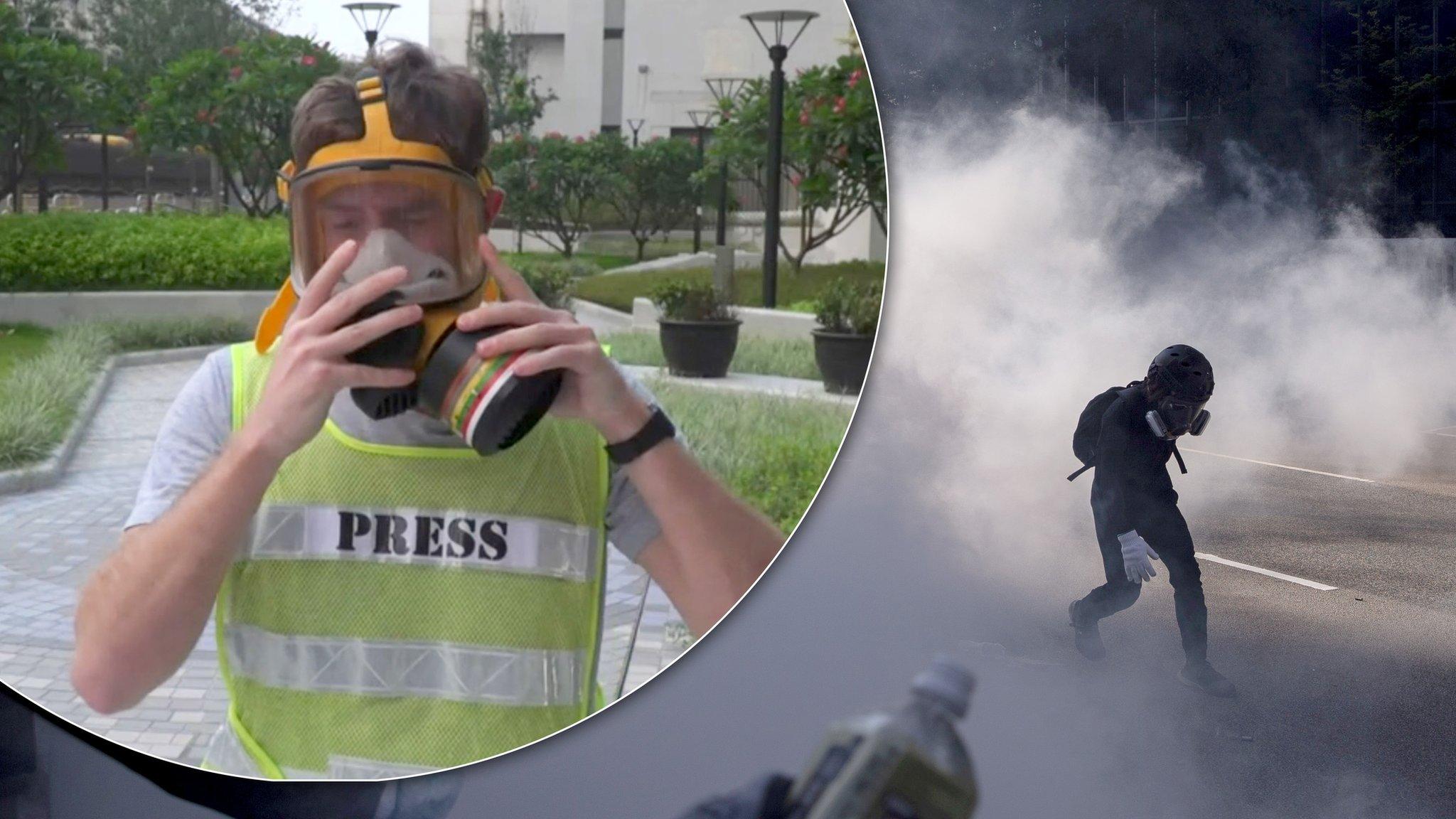Hong Kong: What's the current situation?
- Published
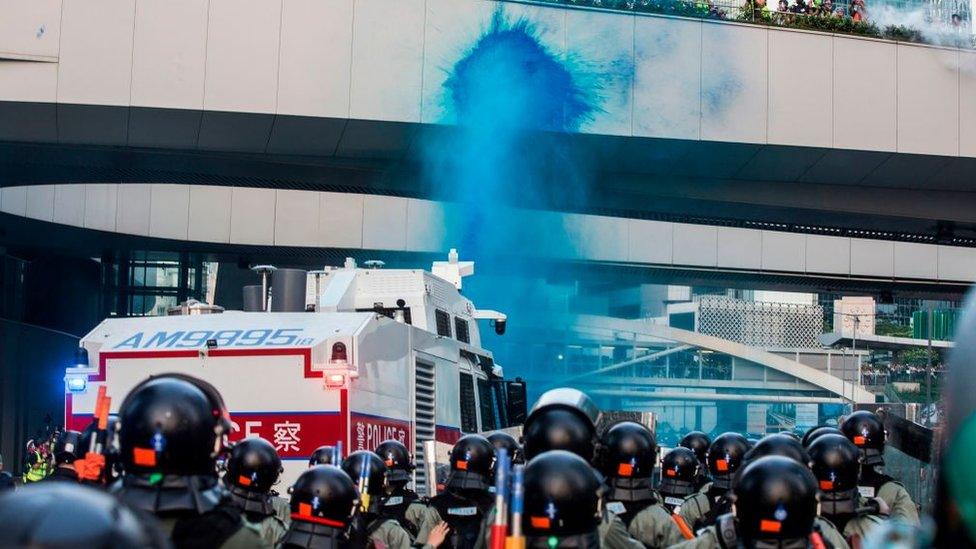
Police fired water cannons at protestors during recent demonstrations
Protests have been taking place in Hong Kong for many months now.
They first started in June and have been getting increasingly violent.
Demonstrators were originally protesting against a law that could have seen citizens sent to China to be tried for political crimes.
The law, known as the extradition bill, has now been scrapped but protests are still going on.
Some students have been boycotting school to join the protests.
WATCH: Why are there protests in Hong Kong?
Clashes between protesters and police have become increasingly violent but there have also been peaceful demonstrations.
Protesters are now demonstrating over broader issues linked to democracy, human rights and their treatment by police.
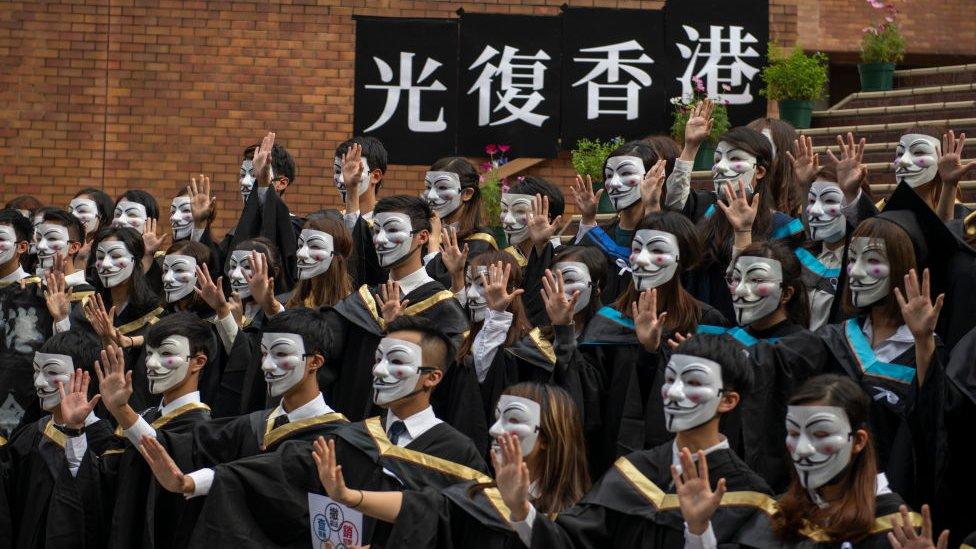
University students protest by covering their faces with masks and holding free Hong Kong signs
Schools and universities were closed over safety fears in early November, but lessons have now resumed in most schools.
What's Hong Kong like?
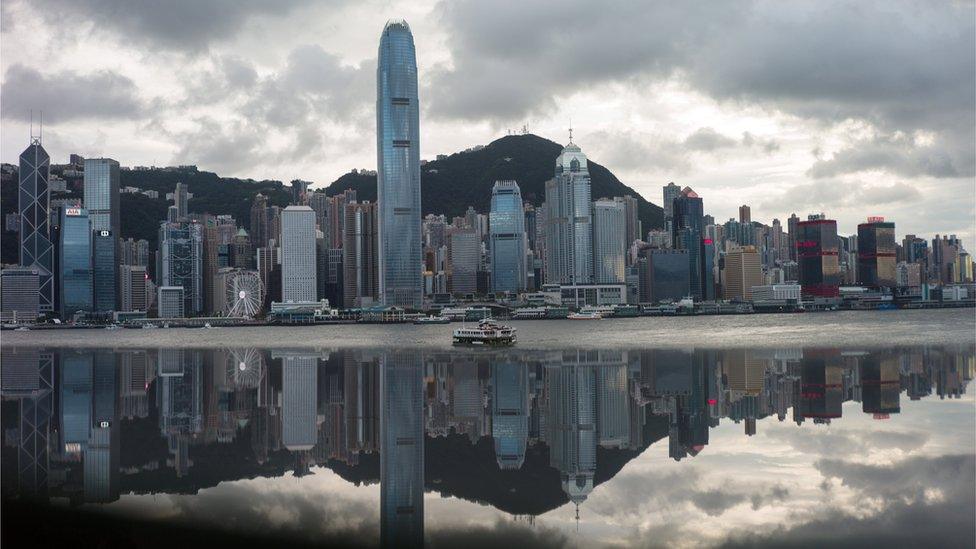
Hong Kong and China - one country, two systems
Hong Kong is a region in southeast Asia, smaller than the area of Greater London.
It is not a country, but a region. Its official name is Hong Kong Special Administrative Region of the People's Republic of China.
This means the region belongs to China, but enjoys some freedom and independence from China's laws.
It has a population of roughly seven million people but Hong Kong is a very important city.
Hong Kong is also seen as an important global centre for banking and industry.
Why did the protests start in Hong Kong?
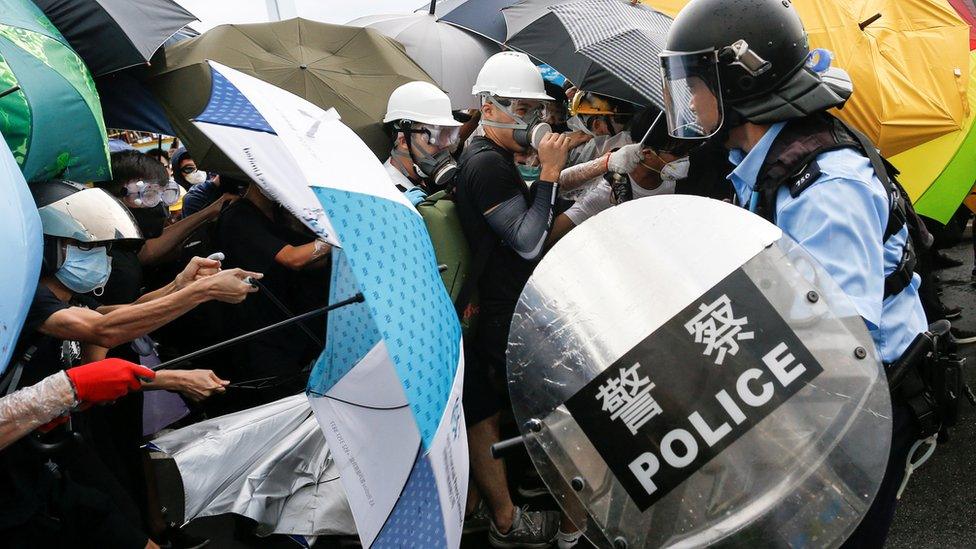
Protesters have been marching with umbrellas and helmets
For many years, Hong Kong was run by the UK as a part of the former British Empire.
That was until 1997, when control of the city was handed over to China.
But a special agreement with China - called "one country, two systems" - was created to make sure that Hong Kong had some independence from China.
This means that the city has its own laws, its own courts and its residents enjoy certain freedoms unavailable to people who live in mainland China.
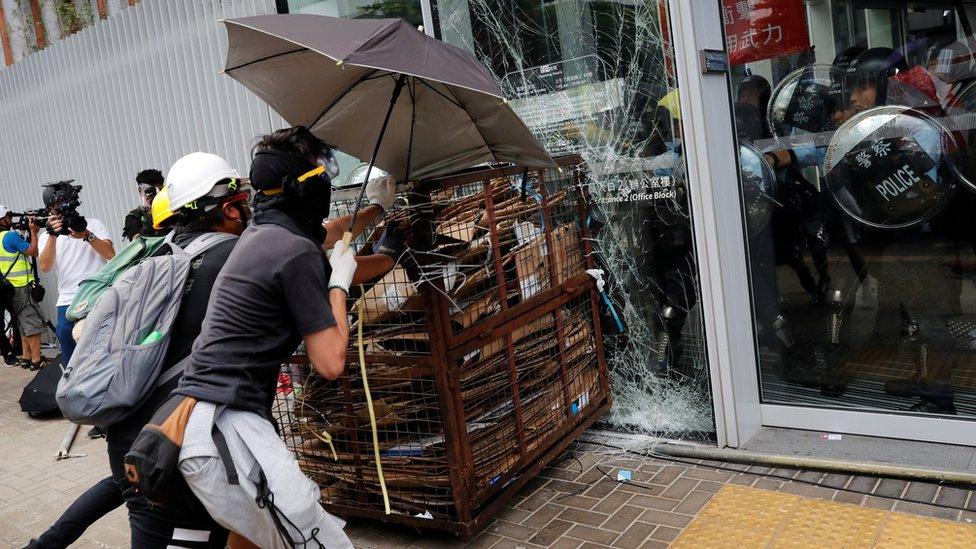
Protesters breaking into a government building in Hong Kong
However, protesters felt that the new law called the Extradition Bill (which was scrapped) had been designed to give more control over Hong Kong back to China.
They want to keep their independence from the Chinese government, and believed that Chief Executive Carrie Lam was looking to create a closer relationship with China.
Now despite the fact that the bill has been scrapped some people are still protesting against China's influence in Hong Kong.
Since June 2019 there have been lots of protests. Here are some of the most significant points so far.
3 April: Hong Kong's government introduced plans for changes to legislation that would allow for criminal suspects to potentially be extradited to China.
9 June: The first big protests took place on with an estimated one million people marched to the government headquarters to show they were against the proposed bill.
15 June: Hong Kong leader Carrie Lam said she would indefinitely delay the extradition bill.
16 June: Despite this, an estimated two million people took to the streets, demanding the bill be withdrawn completely and calling for Ms Lam's resignation.
21 June: Protesters blockaded police headquarters for 15 hours.
1 July: The anniversary of Hong Kong's handover from the UK to China, the Legislative Council (LegCo) building was stormed by protesters.
21 July: Protesters defaced China's Liaison Office in Hong Kong.
2 August: Even civil servants - supposed to be politically neutral - joined demonstrations in their thousands.
5 August: Yet another city-wide strike was held, bringing services across Hong Kong to a standstill.
11 August: police stormed enclosed railway stations, firing tear gas at protesters, leading yet again to dramatic scenes of confrontation.
12 August: Protesters gathered at the airport, leading to hundreds of flights being cancelled.
4 September: Hong Kong's leader Carrie Lam announced she would withdraw the highly controversial extradition bill which had started the protests.
9 September: Students formed a human chain and sang protest songs.
14 September: Hundreds of protestors took part in a rally outside the British Consulate-General to ask for the UK's help in protecting certain freedoms.
16 September: Police in Hong Kong used tear gas and water cannons against protestors after violence broke out.
1 Oct: The most widespread unrest since the protests began as China's Communist Party rulers celebrate the 70th anniversary of the founding of the People's Republic of China. An 18-year-old protester is shot in the shoulder.
4 Oct: face masks are banned, sparking protests. A 14-year-old boy is shot in the thigh.
23 Oct: Extradition bill is formally withdrawn.
11 Nov: Police fire at protesters on the eastern side of Hong Kong island, one person injured.
28 Nov: US President Donald Trump signs bill which supports Hong Kong protesters.
- Published28 November 2019
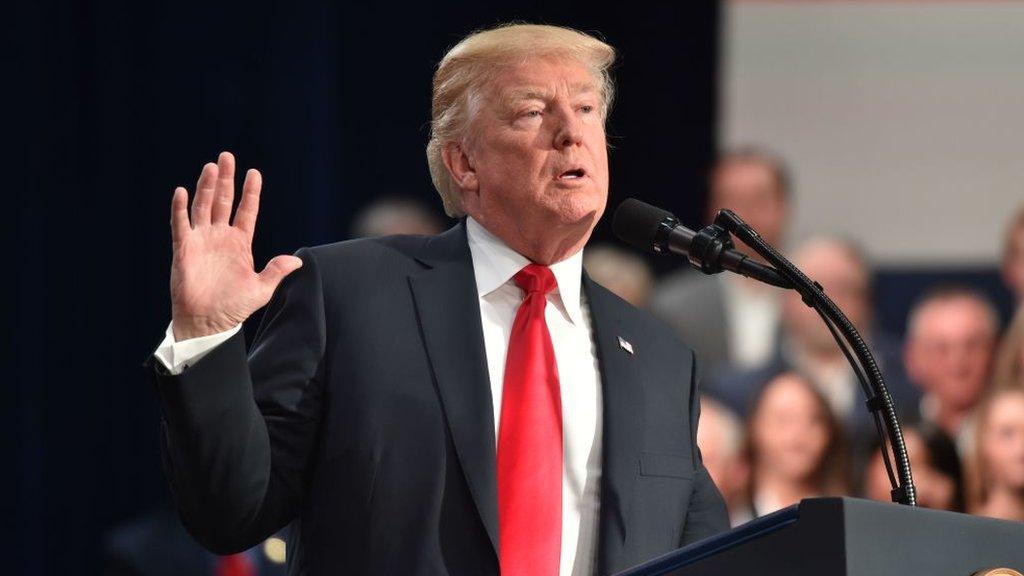
- Published17 June 2019
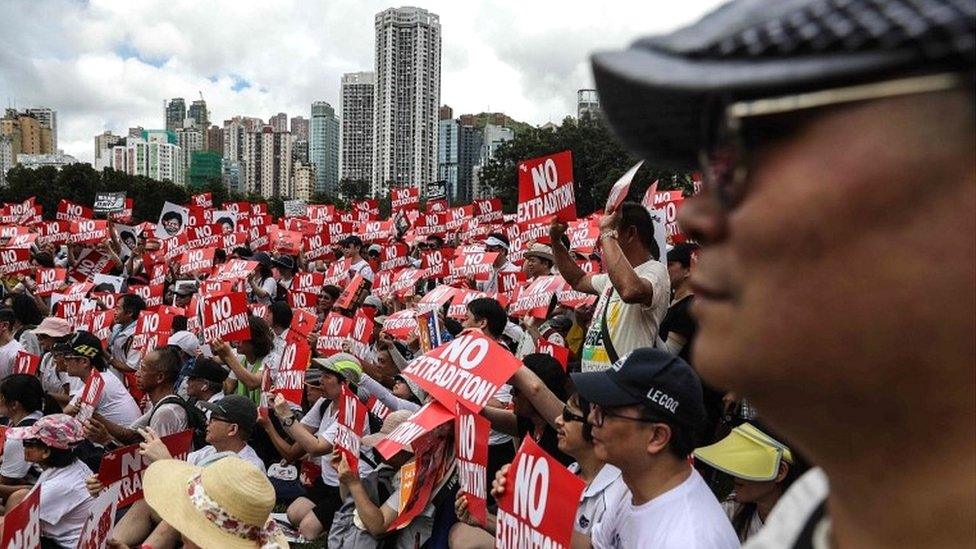
- Published8 August 2019
